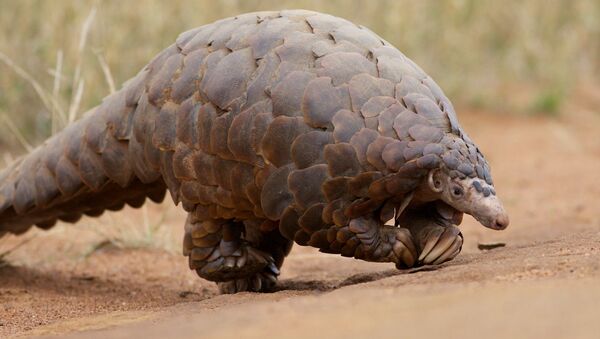Scientists claim to have found more clues about how the new coronavirus could have spread from bats through pangolins and into humans. But they said it's too soon to blame pangolins for the pandemic and suggest a third species of animal may have played host to the virus before it spilled over to people.
Writing in the journal Science Advances, researchers from Duke University and the Los Alamos National Laboratory said an examination of the closest relative of the virus found that it was circulating in bats but lacked the protein needed to bind to human cells. They said this ability could have been acquired from a virus found in pangolins – a scaly mammal that is one of the most illegally trafficked animals in the world.
The team analysed 43 complete genomes from three strains of coronaviruses that infect bats and pangolins and that resemble the new COVID-19 virus.
"In our study, we demonstrated that indeed SARS-CoV-2 has a rich evolutionary history that included a reshuffling of genetic material between bat and pangolin coronavirus before it acquired its ability to jump to humans", said Elena Giorgi, a staff scientist at Los Alamos National Laboratory who worked on the study.
But their findings may let pangolins off the hook. The animals, also known as scaly anteaters, are sold as food in many countries, including China, and have been a prime suspect as a possible source of the pandemic.
"The currently sampled pangolin coronaviruses are too divergent from SARS-CoV-2 to be its recent progenitors", the researchers wrote.
Whether the mixing and matching between bat viruses and pangolin viruses was enough to change the virus into a form that now easily infects humans remains unclear, the researchers said.
"It is also possible that other not yet identified hosts (can be) infected with coronaviruses that can jump to human populations through cross-species transmission", the researchers wrote. "If the new SARS-CoV-2 strain did not cause widespread infections in its natural or intermediate hosts, such a strain may never be identified".
But people are setting themselves up to be infected with new viruses via "wet markets" where many different species of live animals are caged and sold, and by moving deeper into forests where animals live, the researchers said.
What is clear though is that people need to reduce contact with wild animals that can transmit new infections, the researchers concluded.
According to The Guardian, Professor Edward Holmes, an evolutionary biologist at the University of Sydney, Australia, said more work on the subject was needed. "There is a clear evolutionary gap between Sars-Cov-2 and its closest relatives found to date in bats and pangolins", he said. "The only way this gap will be filled is through more wildlife sampling".




